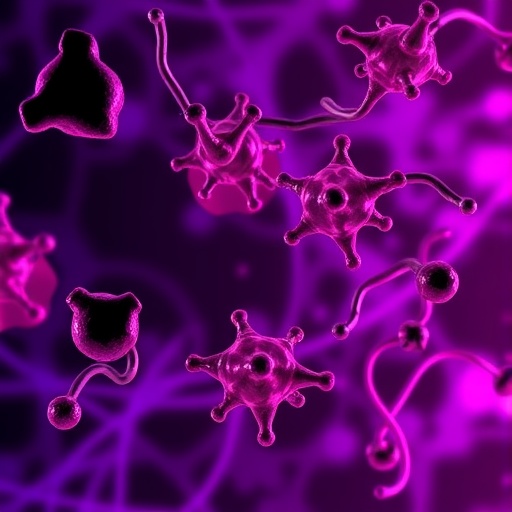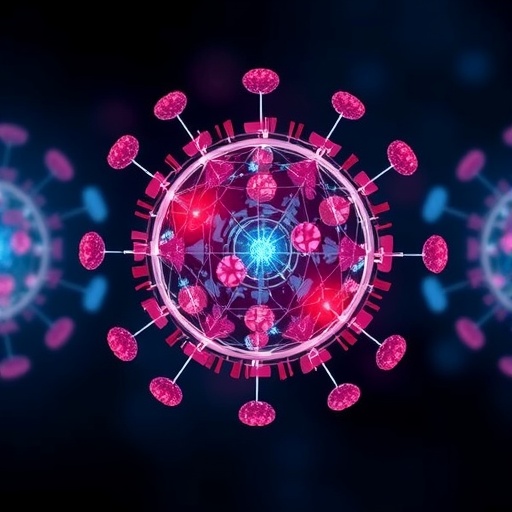A groundbreaking study has emerged from the collaborative work of researchers Yildiz, Turk, and Katirci, delving into the intricate relationship between liver function, insulin resistance, and the modulation of key biomolecules in a laboratory setting that mimics critical aspects of human disease. This research reveals how the therapeutic agent, darbepoetin-alpha, impacts the hepatic dynamics of apelin and galectin-3, two crucial proteins linked to metabolic regulation and inflammation. The findings presented in this study hold significant implications for the treatment of insulin resistance, a prelude to more severe metabolic disorders such as type 2 diabetes.
Insulin resistance is an increasingly prevalent condition that affects millions of people worldwide. It occurs when cells in the body become less responsive to the hormone insulin, which is responsible for regulating glucose levels. This reduction in sensitivity leads to elevated blood sugar levels and can pave the way for serious health complications. The investigation of factors such as apelin and galectin-3 within the context of insulin resistance provides a vital lens into understanding the biochemical interactions that may offer pathways for effective interventions.
Darbepoetin-alpha, a synthetic form of erythropoietin, is commonly known for its role in stimulating red blood cell production. However, what is lesser-known is its potential pleiotropic effects, particularly among metabolic regulators in the liver. In this study, the researchers designed a series of experiments using Dexamethasone-induced insulin-resistant rat models, a well-established methodology for simulating the physiological changes akin to those seen in humans with metabolic disorders. The study sought to determine whether darbepoetin-alpha could alter the expression levels of apelin and galectin-3 in these subjects, potentially modifying the course of insulin resistance.
The experimental approach involved administering Dexamethasone to induce an insulin-resistant state, followed by treatment with darbepoetin-alpha. The researchers meticulously assessed various biochemical markers, focusing on the hepatic production of apelin—a peptide implicated in numerous physiological processes, including appetite regulation and glucose metabolism—as well as galectin-3, which has been associated with inflammation and fibrotic processes. By measuring these parameters, the study aimed to identify any significant modulation caused by darbepoetin-alpha treatment.
One of the notable findings highlighted in this research was the upregulation of apelin levels in the treatment group. This is a particularly intriguing result because apelin is known to enhance insulin sensitivity and has potential cardioprotective effects. Increased apelin levels may therefore act as a counteractive force against the adverse effects of insulin resistance, suggesting that darbepoetin-alpha could play a dual role in both enhancing erythropoiesis and improving metabolic outcomes in individuals with insulin resistance.
Conversely, the study also observed a modulation in galectin-3 levels. Galectin-3 is often viewed as a biomarker of fibrotic diseases and is known to play a detrimental role in chronic inflammation. The reduction of galectin-3 levels following darbepoetin-alpha treatment suggests a potential anti-inflammatory effect of the drug, which could further ameliorate the insulin-resistant state. This dual modulation of apelin and galectin-3 thus exemplifies the complex interactions that occur within the hepatic environment and their profound implications for metabolic health.
As the researchers analyzed the biochemical pathways involved, they laid bare the intricate mechanism of action behind these molecular changes. Apelin exerts its effects through specific receptors that engage various intracellular signaling cascades, notably enhancing glucose uptake in peripheral tissues, which directly counters the predicament posed by insulin resistance. Conversely, galectin-3’s pro-inflammatory actions are mediated through its interaction with immune cells and fibrogenic pathways, promoting a vicious cycle that exacerbates metabolic dysfunction. Understanding these dynamics sheds light on the compelling interconnectedness between liver function, inflammation, and metabolic regulation.
The outcomes of this study prompt a conversation about the wider implications for clinical practice, particularly in the management of metabolic disorders. The potential benefits of darbepoetin-alpha extend beyond anemia treatment, suggesting that it could be further explored as an adjunct therapy in patients with insulin resistance. This perspective aligns well with the ongoing quest for novel therapeutic agents that offer multi-target effects, particularly in the realm of lifestyle-related diseases that pose significant economic and health burdens globally.
Researchers believe that delineating the roles of apelin and galectin-3 not only paves the way for enhanced understanding but also provides a framework for future studies aimed at assessing combination therapies. The fact that both markers can be addressed concurrently offers a compelling rationale for their joint therapeutic targeting. This multidimensional approach could lead to more effective management strategies for insulin resistance and related metabolic conditions that currently afflict a large segment of the population.
Furthermore, the implications of this research extend beyond the immediate scope of insulin resistance. The modulation of apelin and galectin-3 can potentially influence a variety of other physiological systems, including cardiovascular function, where these biomarkers also play critical roles. The comprehensive understanding of their interactions within the context of darbepoetin-alpha treatment lays the groundwork for subsequent inquiries that explore not only metabolic health but cardiac outcomes as well.
The study by Yildiz and colleagues embodies a crucial intersection between basic research and clinical application. By investigating the hepatic functions modulated by darbepoetin-alpha, the researchers contribute to a growing body of knowledge aimed at unraveling the complexities of metabolic disease mechanisms. With obesity and metabolic syndrome on the rise globally, this line of inquiry is more important than ever.
In conclusion, the findings from this illuminating study have the potential to spark new approaches to the treatment of insulin resistance. The therapeutic modulation of apelin and galectin-3 through darbepoetin-alpha may offer dual benefits, enhancing metabolic health while mitigating inflammation. Continued research in this domain will be essential for validating these findings in clinical settings, thus paving the way for the refinement of treatment protocols that hinge on a deeper understanding of hepatic biology and metabolic regulation.
The convergence of insights from this study beckons a new era in therapeutic strategies against insulin resistance—one that redefines established paradigms and encourages innovative approaches to health management in an ever-evolving landscape of metabolic disorders. As the connection between liver function and systemic metabolism becomes increasingly clear, there is immense potential to harness these pathways for improved patient outcomes in the near future.
Subject of Research: Modulation of hepatic apelin and galectin-3 levels by darbepoetin-alpha in insulin-resistant rats.
Article Title: Hepatic modulation of apelin and galectin-3 by darbepoetin-alpha in Dexamethasone induced insulin-resistant rats.
Article References:
Yildiz, H.T., Turk, A., Katirci, E. et al. Hepatic modulation of apelin and galectin-3 by darbepoetin-alpha in Dexamethasone induced insulin-resistant rats.
BMC Pharmacol Toxicol 26, 173 (2025). https://doi.org/10.1186/s40360-025-01014-x
Image Credits: AI Generated
DOI: 10.1186/s40360-025-01014-x
Keywords: Insulin resistance, Apelin, Galectin-3, Darbepoetin-alpha, Dexamethasone, Hepatic modulation, Metabolic health.
Tags: biochemical pathways in glucose regulationdarbepoetin-alpha effects on insulin resistancegalectin-3 and inflammationimplications for diabetes treatmentinsulin sensitivity and health complicationsliver function in metabolic disordersmetabolic regulation and protein interactionsresearch on insulin resistance biomarkersrole of apelin in metabolic regulationsynthetic erythropoietin applicationstherapeutic agents for insulin resistancetype 2 diabetes prevention strategies





